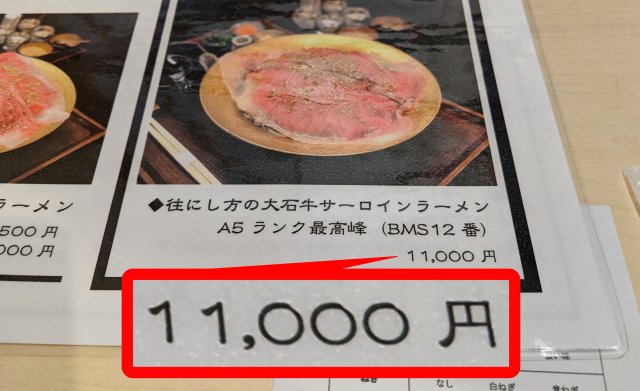
We splurge on luxury noodles with a luxury price tag.
When you’re looking for a cheap meal to fill you up in Japan, you can’t go past a steaming hot bowl of ramen. However, if you’re looking to pay through the nose for noodles, there are a few places where you can do that too, and Matsusakagyuu Ramen Hitori Shabu Shabu Matsutora in Tokyo’s Akasaka district is one such place.
▼ The restaurant’s mouthful of a name translates to “Matsusaka Beef Ramen Solo Shabu Shabu Pine Tree Tiger”, with “shabu shabu” referring to Japanese hotpot.
Matsusaka beef hails from Mie Prefecture and is famous for being one of Japan’s “Sandai Wagyu” (“big three wagyu“), along with Kobe beef from Hyogo Prefecture and Omi beef from Shiga Prefecture. Known for its high fat-to-meat ratio, Matsusaka beef is incredibly expensive, so naturally Matsusaka Beef Ramen also comes with a high price tag.
▼ When we visited Matsutora, we were ushered to a counter seat, where condiments and a hot pot for shabu shabu had been placed on the table in advance.
Having only opened in May, the restaurant was beautifully appointed, with counter seating set up against the wall in a hori-gotatsu (literally “dug-out kotatsu”) style, with a low table and a hollowed-out area beneath it for your legs. Diners use high-backed chairs on tatami floors here, providing the ultimate comfort for the high-class experience, and looking at the menu, we saw prices were equally plush.
The prized beef ramen starts at 1,980 yen (US$17.87) for a bowl of A5 Matsusaka Beef Ramen, and 2,500 yen for A5 Sirloin Matsusaka beef ramen, with each option containing a single slice of meat.
We were looking to splurge on the most expensive item we could find on the menu, which was the “Inishie no Taiseki Gyu Sirloin Ramen A5 Rank Saikoho (BMS 12)” (“Ancient Times Boulder Beef Sirloin Ramen Peak A5 Rank BMS 12”), priced at a whopping 11,000 yen ($99.28).
“Ancient Times Boulder Beef” is also known as “phantom beef” due to its rarity, as it’s sourced from only around ten cows per year, and only from Japanese black breed heifers that have been fattened for over 1,200 days (3.2 years).
Moreover, “BMS 12” is classed as the highest quality of beef (the beef has at least 56.3 percent intramuscular fat, which leads to exquisite marbling) in the already top A5 rank (A5 Rank can include BMS levels from 8-12), making this the most supreme of supreme wagyu money can buy.
▼ Just as we were wondering if it would be a shame to spoil such high-quality wagyu by placing it in a bowl of ramen, this arrived.
We’d never seen a bowl of ramen this stunning, and we were so dazzled by the shine on the nori seaweed and the scattering of extravagant flakes of gold leaf that we weren’t sure if there were any noodles here at all, as we couldn’t see them for all the meat that was covering them.
▼ Gold leaf on BMS 12 A5 rank Inishie Matsusaka beef in noodle broth is a rare sight indeed.
Once we managed to tear our eyes away from the beauty of the dish, we dipped our spoon in to assess the quality of the broth. It was clear and had an elegant, refined taste, and when we asked staff about it, they told us it contained smoked bonito soup stock and was made according to a recipe that had been handed down from the very first chef of Osaka Nadaman, an exclusive Japanese-style restaurant founded in 1830.
Impressed by the broth, it was time to move on to the meat, and lifting the marbled slice from the bowl revealed it to be so thin that it had been cooked by the heat of the broth, as if it were in a hotpot. Placing one end of it on the tongue, the meat was so delicately soft that it broke away and melted in the mouth without any pressure from the jaws whatsoever.
▼ The beef had a texture like butter.
Beneath the sublime slice of beef lay some more familiar ramen ingredients – noodles, a boiled egg, and some sliced mushrooms. The broth was so refined you could see right to the bottom of the bowl.
The noodles were another hidden gem, with a deliciously chewy texture and delicate flavour that allowed the meat and broth to shine through.
For avid lovers of wagyu, this is a meal that’s well worth the price tag, not only for its refined flavour but for the chance to taste some of the country’s rarest and finest beef. The restaurant aims to cater to all budgets, though, with the cheapest dish on the menu being a 500-yen Ryotei Dashi Ramen (with “ryotei” being the word for a luxurious traditional Japanese restaurant) and the most expensive dish being the Kaiun Hissho Kinpaku Sanno Ramen (“Better Fortune Certain Victory Gold Leaf Saano Ramen”), priced at…
▼ 110,000 yen ($992.82)!
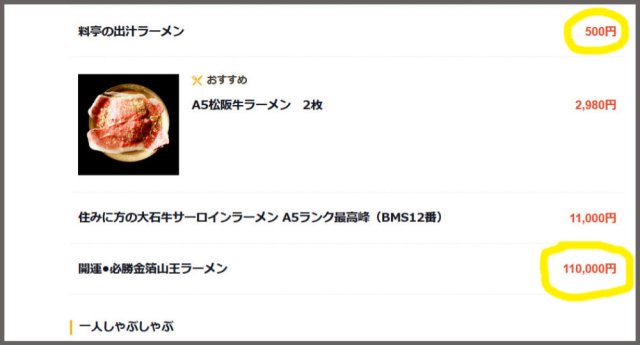
While we thought we’d eaten the most expensive dish on the menu, it turns out there was an even more exclusive dish to be had, and it was so secret it wasn’t even listed on the menu inside the restaurant. We only found out about the super expensive dish after looking at the menu on the restaurant’s listing at the Tabelog dining website.
Curious to find out how popular the $1,000 ramen was, we asked staff at the restaurant about it, and they told us they were yet to receive an order for it. Understandable, given that it would take a lot of courage for someone to order such an expensive dish — and we would know, as we’d fretted over spending $100 on our meal.
We can’t deny we’re now curious to step up our game and explore the wonders of $1,000 ramen. Because although our budgets are more suited to vending machine ramen, now that our taste buds have gotten a taste of luxury noodles, they’re tempting us to splurge on expensive options more often!
Restaurant information
Matsusakagyuu Ramen Hitori Shabu Shabu Matsutora / 松阪牛ラーメン 一人しゃぶしゃぶ 松虎
Address: Tokyo-to, Minato-ku, Akasaka 3-9-16 Fukutora Building 1F
東京都港区赤坂3-9-16 福虎ビル 1F
Open 11:30 a.m.-7 p.m. (closed Saturdays and Sundays)
Photos ©SoraNews24 unless otherwise stated
● Want to hear about SoraNews24’s latest articles as soon as they’re published? Follow us on Facebook and Twitter!
[ Read in Japanese ]

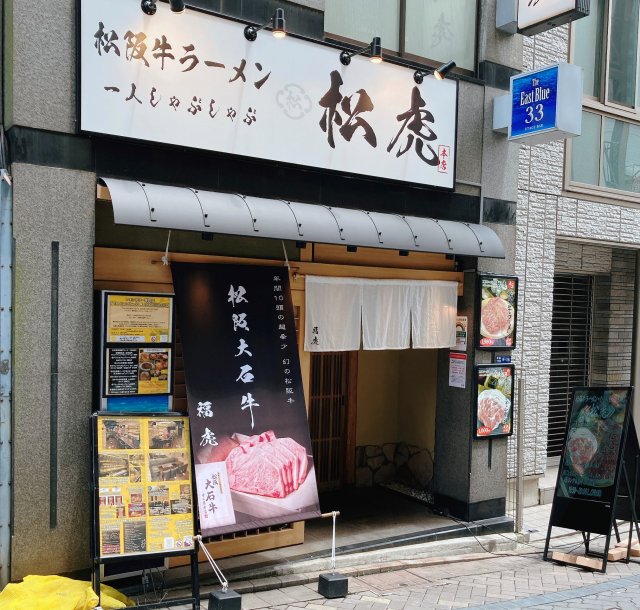

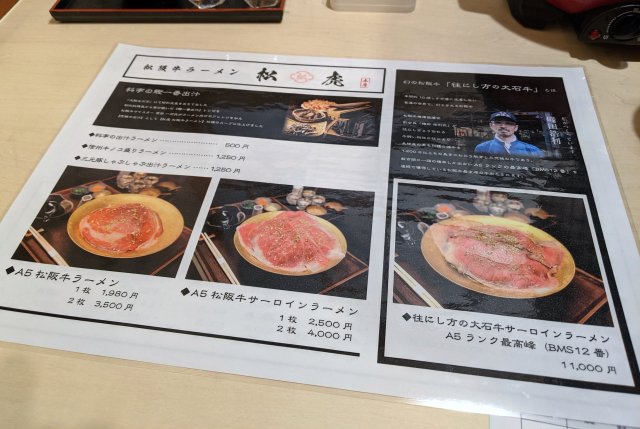
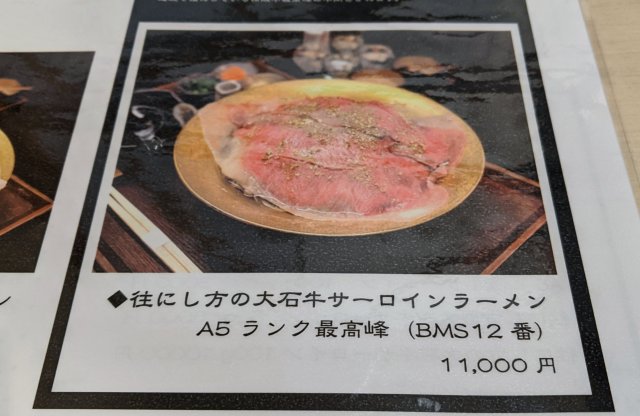
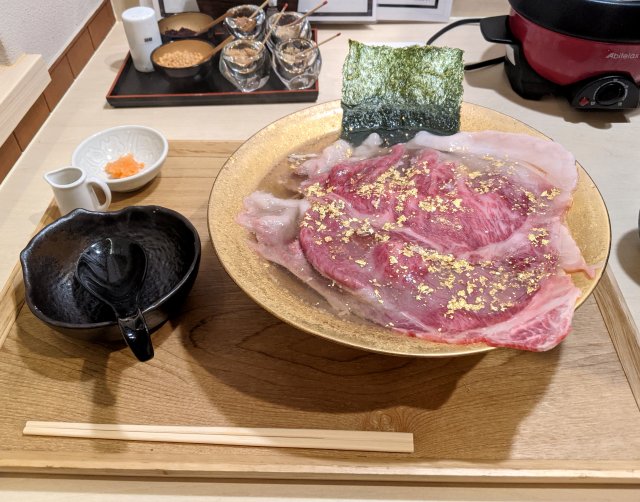
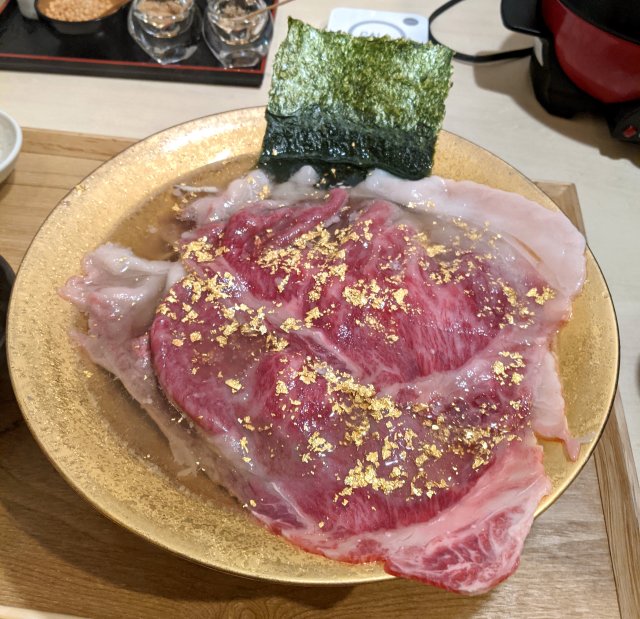
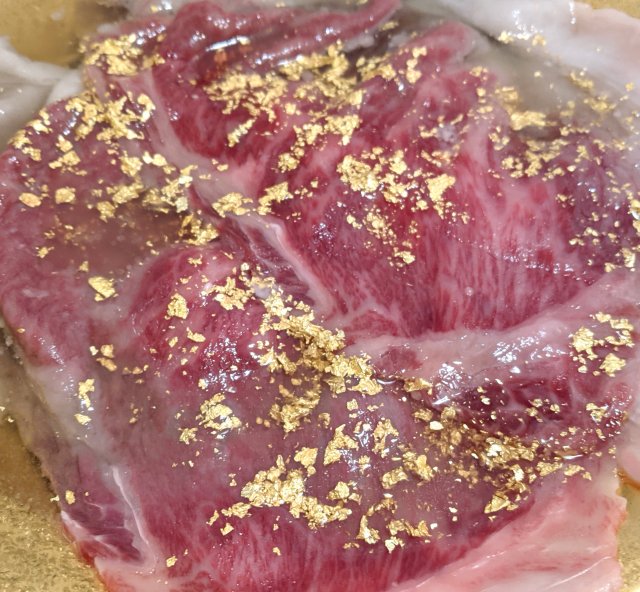
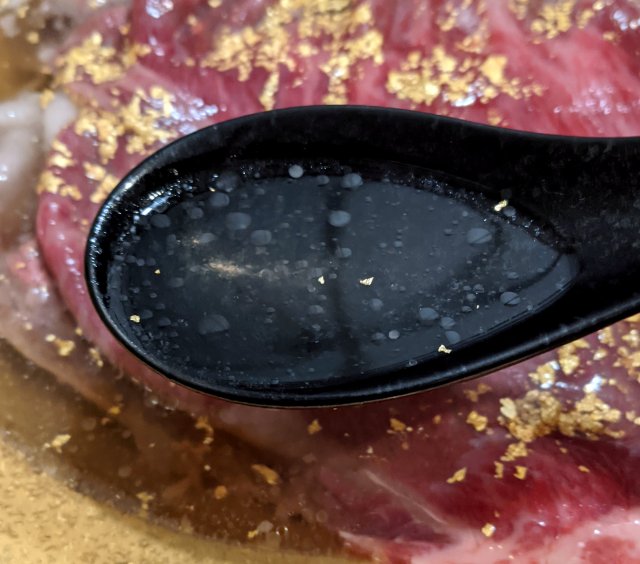
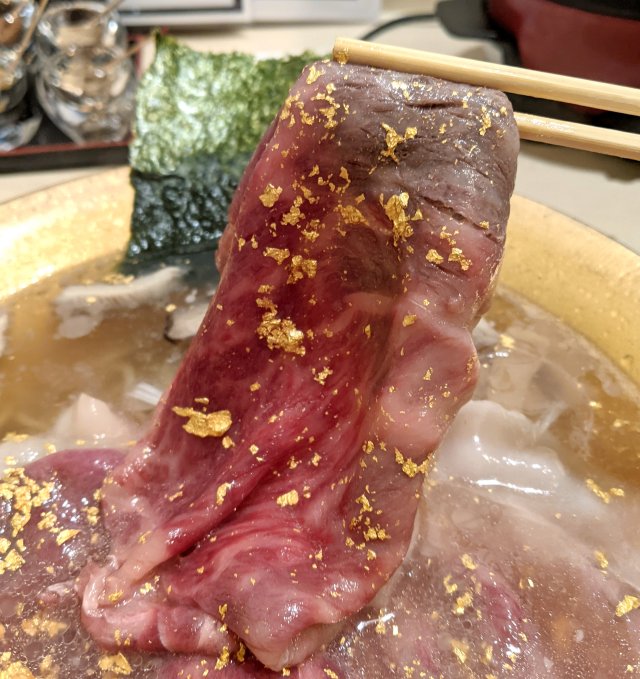
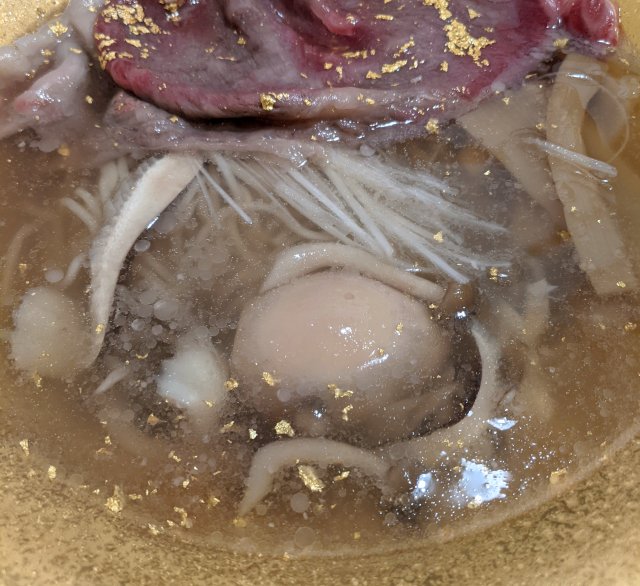
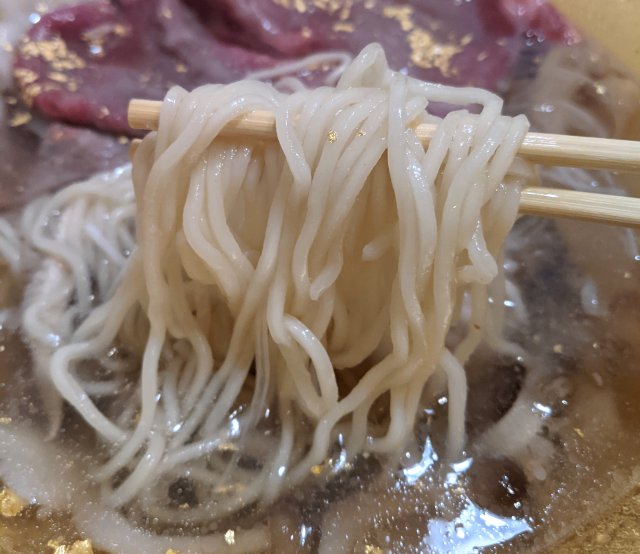
 This is what Tokyo’s craziest roast beef ramen looks like…but save room for dessert!
This is what Tokyo’s craziest roast beef ramen looks like…but save room for dessert! Is ramen without the “men” a Tokyo dining paradox worth experiencing?【Taste test】
Is ramen without the “men” a Tokyo dining paradox worth experiencing?【Taste test】 Japanese restaurant serves extra wide noodles next to Tokyo Station
Japanese restaurant serves extra wide noodles next to Tokyo Station Wagyu Burger opens in Tokyo, serving up highest-grade beef at reasonable prices
Wagyu Burger opens in Tokyo, serving up highest-grade beef at reasonable prices Yakiniku Like in Tokyo starts serving up solo shabu shabu hot pot, and we tried it
Yakiniku Like in Tokyo starts serving up solo shabu shabu hot pot, and we tried it Pizza Hut Japan’s hot lucky bags are perfect for a New Year’s pizza party
Pizza Hut Japan’s hot lucky bags are perfect for a New Year’s pizza party We found possibly the quietest Japanese-style hotel in Tokyo’s bustling Shinjuku district
We found possibly the quietest Japanese-style hotel in Tokyo’s bustling Shinjuku district 7 great places to see Mt. Fuji from without having to climb it
7 great places to see Mt. Fuji from without having to climb it The top 70 words that keep showing up in Japanese light novel titles (and yes, isekai is one of them)
The top 70 words that keep showing up in Japanese light novel titles (and yes, isekai is one of them) Japanese thug wear from Birth Japan perfect for those breaking bad next year
Japanese thug wear from Birth Japan perfect for those breaking bad next year All-you-can-eat yakiniku in Shinjuku for less than 10 bucks!
All-you-can-eat yakiniku in Shinjuku for less than 10 bucks! 7-Eleven Japan starts new temporary luggage storage service in over 300 branches
7-Eleven Japan starts new temporary luggage storage service in over 300 branches 7-Eleven Japan’s ramen-cooking robot whipped us up a bowl of noodles【Taste test】
7-Eleven Japan’s ramen-cooking robot whipped us up a bowl of noodles【Taste test】 Prominent boob-centric manga artist shocks fans by revealing she’s a beautiful buxom woman
Prominent boob-centric manga artist shocks fans by revealing she’s a beautiful buxom woman Eight Ways You Really, Really Shouldn’t Use a Japanese Toilet
Eight Ways You Really, Really Shouldn’t Use a Japanese Toilet Starbucks Japan ready to get Year of the Horse started with adorable drinkware and plushies【Pics】
Starbucks Japan ready to get Year of the Horse started with adorable drinkware and plushies【Pics】 Cyberpunk anime meets traditional culture in Ghost in the Shell gold leaf Japanese changing screens
Cyberpunk anime meets traditional culture in Ghost in the Shell gold leaf Japanese changing screens Hello Kitty Choco Egg figures are an adorable trip through three periods of Japanese pop culture【Pics】
Hello Kitty Choco Egg figures are an adorable trip through three periods of Japanese pop culture【Pics】 Japan’s otoshidama tradition of giving kids money at New Year’s gets a social welfare upgrade
Japan’s otoshidama tradition of giving kids money at New Year’s gets a social welfare upgrade Lacquerware supplier to emperor of Japan and Pokémon team up for new tableware
Lacquerware supplier to emperor of Japan and Pokémon team up for new tableware Sumo Sanrio! Hello Kitty and pals team up with Japan Sumo Association for new merch【Pics】
Sumo Sanrio! Hello Kitty and pals team up with Japan Sumo Association for new merch【Pics】 Can a dirty butthole make you filthy rich in Japan? We’re starting a New Year’s lottery experiment
Can a dirty butthole make you filthy rich in Japan? We’re starting a New Year’s lottery experiment Disillusionment at Tsukiji’s tourist-target prices led us to a great ramen restaurant in Tokyo
Disillusionment at Tsukiji’s tourist-target prices led us to a great ramen restaurant in Tokyo Starbucks teams up with 166-year-old Kyoto doll maker for Year of the Horse decorations【Photos】
Starbucks teams up with 166-year-old Kyoto doll maker for Year of the Horse decorations【Photos】 Tokyo considering law requiring more trash cans following litter increase in heavily touristed area
Tokyo considering law requiring more trash cans following litter increase in heavily touristed area Tokyo’s Tsukiji sushi neighborhood asks tour groups to stay away for the rest of the month
Tokyo’s Tsukiji sushi neighborhood asks tour groups to stay away for the rest of the month Nintendo’s Kirby now delivering orders at Kura Sushi restaurants, but not in Japan
Nintendo’s Kirby now delivering orders at Kura Sushi restaurants, but not in Japan Tokyo event lets you travel back in time, for free, to celebrate 100 years since Showa era start
Tokyo event lets you travel back in time, for free, to celebrate 100 years since Showa era start Sanrio theme park in Japan announces plans to expand into a Sanrio resort
Sanrio theme park in Japan announces plans to expand into a Sanrio resort Japan may add Japanese language proficiency, lifestyle classes to permanent foreign resident requirements
Japan may add Japanese language proficiency, lifestyle classes to permanent foreign resident requirements Survey asks foreign tourists what bothered them in Japan, more than half gave same answer
Survey asks foreign tourists what bothered them in Japan, more than half gave same answer Japan’s human washing machines will go on sale to general public, demos to be held in Tokyo
Japan’s human washing machines will go on sale to general public, demos to be held in Tokyo Japan’s deadliest food claims more victims, but why do people keep eating it for New Year’s?
Japan’s deadliest food claims more victims, but why do people keep eating it for New Year’s? We deeply regret going into this tunnel on our walk in the mountains of Japan
We deeply regret going into this tunnel on our walk in the mountains of Japan Studio Ghibli releases Kodama forest spirits from Princess Mononoke to light up your home
Studio Ghibli releases Kodama forest spirits from Princess Mononoke to light up your home Major Japanese hotel chain says reservations via overseas booking sites may not be valid
Major Japanese hotel chain says reservations via overseas booking sites may not be valid Put sesame oil in your coffee? Japanese maker says it’s the best way to start your day【Taste test】
Put sesame oil in your coffee? Japanese maker says it’s the best way to start your day【Taste test】 No more using real katana for tourism activities, Japan’s National Police Agency says
No more using real katana for tourism activities, Japan’s National Police Agency says Starbucks Japan reveals new sakura drinkware collection, inspired by evening cherry blossoms
Starbucks Japan reveals new sakura drinkware collection, inspired by evening cherry blossoms Updated cherry blossom forecast shows extra-long sakura season for Japan this year
Updated cherry blossom forecast shows extra-long sakura season for Japan this year 2,500 yen for Tokyo ramen? High-end noodles in the high-rent Ginza district are totally worth it
2,500 yen for Tokyo ramen? High-end noodles in the high-rent Ginza district are totally worth it Tokyo ramen restaurant only lets you in with a reservation, is super-expensive, totally worth it
Tokyo ramen restaurant only lets you in with a reservation, is super-expensive, totally worth it Tokyo, Osaka restaurants offering all-you-can-eat beef for two and a half bucks on Meat Day
Tokyo, Osaka restaurants offering all-you-can-eat beef for two and a half bucks on Meat Day Japanese restaurant combines solo shabu shabu dining with the fun of a sushi train
Japanese restaurant combines solo shabu shabu dining with the fun of a sushi train Cappuccino Ramen becomes super popular in Japan, but is it worth the hype?
Cappuccino Ramen becomes super popular in Japan, but is it worth the hype? Yoshinoya beef ramen? Gyudon king’s sister chain opens first Tokyo branch【Taste test】
Yoshinoya beef ramen? Gyudon king’s sister chain opens first Tokyo branch【Taste test】 Takeout ramen broth: A new Tokyo winter noodle trend that’s worth the hype? 【Taste Test】
Takeout ramen broth: A new Tokyo winter noodle trend that’s worth the hype? 【Taste Test】 Beef bowl king Yoshinoya to start serving ramen this summer with new beefy mazesoba
Beef bowl king Yoshinoya to start serving ramen this summer with new beefy mazesoba Stamina-destroying “Paralysis Noodles” are Tokyo’s newest over-the-top ramen innovation
Stamina-destroying “Paralysis Noodles” are Tokyo’s newest over-the-top ramen innovation Eat Kuroge Wagyu beef at this Japanese restaurant in Ginza for less than 10 bucks!
Eat Kuroge Wagyu beef at this Japanese restaurant in Ginza for less than 10 bucks! Is Japan’s new Super Thick Ramen worth waiting two hours in the Tokyo cold for?【Taste test】
Is Japan’s new Super Thick Ramen worth waiting two hours in the Tokyo cold for?【Taste test】 Ramen with bread and grilled cheese topping is our favourite noodle trend in Tokyo right now
Ramen with bread and grilled cheese topping is our favourite noodle trend in Tokyo right now Yoshinoya adds first-ever chain-wide ramen with new beef and pork-broth noodle hot pot meals
Yoshinoya adds first-ever chain-wide ramen with new beef and pork-broth noodle hot pot meals Yoshinoya ramen? Yes, it now exists, and it’s awesome【Taste test】
Yoshinoya ramen? Yes, it now exists, and it’s awesome【Taste test】 Ichiran ramen vs. Ichiran instant ramen: The ultimate taste test right outside the store
Ichiran ramen vs. Ichiran instant ramen: The ultimate taste test right outside the store This ramen restaurant has no name, is one of the best hidden finds in Japan
This ramen restaurant has no name, is one of the best hidden finds in Japan
Leave a Reply